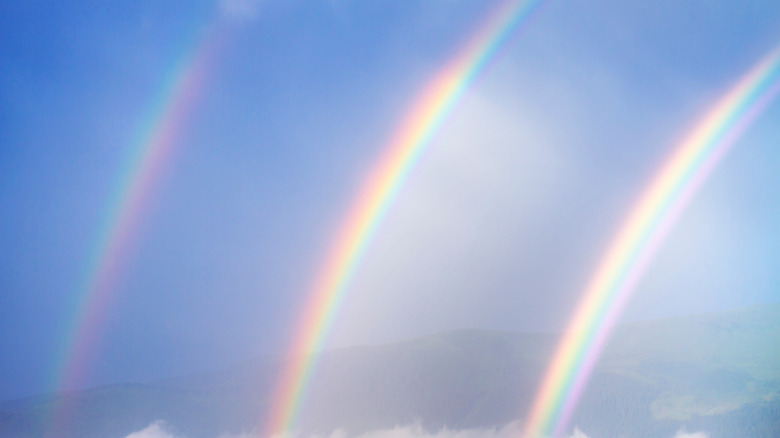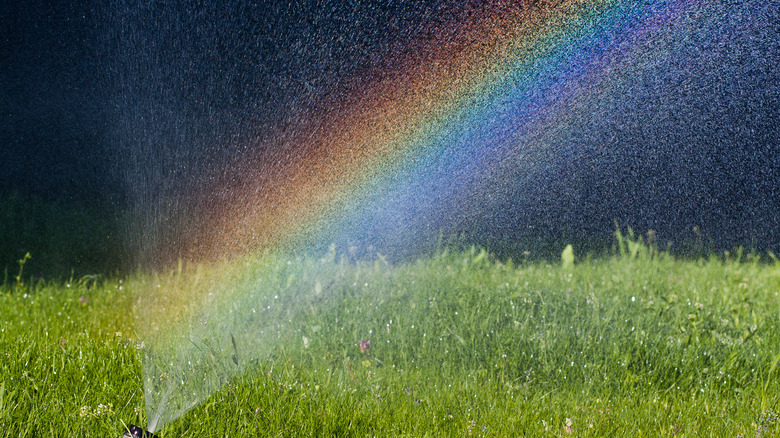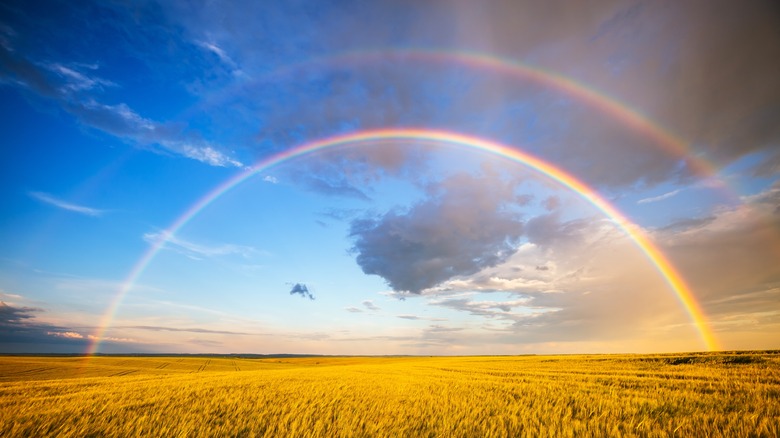Can A Triple Rainbow Happen?
Many people share a common childhood memory: the delight they felt the moment they made their own rainbow, which on a sunny day can suddenly appear while playing with a hose or a watering can. As kids get older and learn about the color spectrum, such effects of light refracting through water eventually lose their magic. On the other hand, few grown adults can resist the beauty of a naturally occurring rainbow that appears on the horizon on a clear, rain-riddled day.
More impressive and rare than a regular rainbow is a double rainbow, when two arches of spectral colors, one inside the other, are visible across the sky. According to weather.com, this unusual event has some predictable elements: for example, the outer rainbow — known to meteorologists as a secondary rainbow — is always dimmer in appearance than the primary one. Another strange detail is that the colors of a secondary rainbow are always inverted: they appear to run from violet to red, instead of red to violet.
Double rainbows, like regular ones, are formed by sunlight light hitting water droplets. But how is the colorful effect created? And if double rainbows are possible, are triple rainbows possible too? Apparently so, though the chance of seeing one when out in the great outdoors is incredibly rare.
The optics of rainbows
Throughout human history, rainbows have exerted a powerful symbolic meaning. In religion, a rainbow is often considered a sign of peace from God, as when one was said to appear in the sky after the Great Flood which Noah navigated in his Ark, according to the Bible, while in recent years the phenomenon has become symbolic of the wide spectrum of sexuality, having been chosen as the basis of the Pride flag back in 1978.
Rainbows certainly have a miraculous appearance when spotted in the sky, but the physics behind the phenomenon is quite simple. Sunlight hits droplets of water, which are generally spherical and are reflected outward in an arc from the droplet's curved surface, splitting the light into a spectrum and casting it across the sky.
In the case of a double rainbow, a certain proportion of the light is captured a second time, and bounces within the raindrop to eventually be emitted from a different angle, creating the secondary rainbow alongside the primary.
How a triple rainbow appears (answer: rarely)
Of course, the existence of a double rainbow implies the possible existence of a triple rainbow. But while many people can recall having seen the spectacle of a double rainbow at some point in their lives, those who have seen a triple are in a vanishingly small minority, according to scientific research.
As reported in Science Daily, triple rainbows, known as "tertiary" rainbows in optics, are formed when light hits rain droplets as three separate rays, causing the refraction to project as three bands of spectral colors across the sky. Before recent scientific advances, sightings of tertiary rainbows had been reported just five times over the course of a quarter of a millennium, so few that it might be assumed by many scientists that the witness accounts were untrustworthy aberrations and that perhaps naturally occurring tertiary rainbows didn't exist in nature after all.
It was only in 2011 that the existence of tertiary rainbows were confirmed with photographic evidence, with scientists also creating meteorological models that predict when such a rare occurrence might appear. Weather.com reports that, theoretically at least, quadruple rainbows are also possible, though when rainbow lovers might see a photo of such a rare event is anyone's guess.


